-
With drought easing, California rolls back water conservation rules
California announced on Wednesday that it was rolling back mandatory water conservation rules which were put in place at the height of a 4-year drought. The decision to roll back the restrictions came after water conditions in many parts of the state have improved as a result of a wet winter.
-
-
Mapping Louisiana’s water flow interactions to preserve state’s fresh water
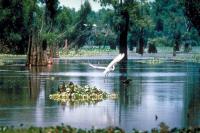
As part of an effort to preserve Louisiana’s fresh water resources, RTI International worked with The Nature Conservancy (TNC) to develop two online tools, released today, that offer a first-of-their-kind look at how Louisiana’s waters interact with each other. These tools will help fishermen, oystermen, planners, decision makers, and all Louisianans understand the state’s unique water flow patterns.
-
-
Water 4.0—the next revolution in urban water systems
In his 2014 book, Water 4.0, UC Berkeley environmental engineer David Sedlak identifies four “revolutions” in the development of urban water systems. Sedlak says that we need a fourth revolution now. Soaring urban populations and a changing climate create chronic water shortages in some cities and too much water in others. Some contaminants may pose hazards in extraordinarily small concentrations. And aging pipe networks threaten the health of entire communities, as seen this year in Flint, Michigan.
-
-
Governor Brown issues order to continue water savings as drought persists
Moving to bolster California’s climate and drought resilience, Governor Edmund G. Brown Jr. the other day issued an executive order that builds on temporary statewide emergency water restrictions to establish longer-term water conservation measures. The governor’s office says that Californians have responded to the call to conserve water during the drought by dialing back sprinklers, replacing lawns, fixing leaky faucets, and installing more efficient toilets and washing machines. Between June 2015 and March 2016, Californians reduced water use by 23.9 percent compared with the same months in 2013 — saving enough water to provide 6.5 million Californians with water for one year.
-
-
Mapping water use of America’s water resources
Water is one of our nation’s most important natural resources, one that is long been considered inexhaustible. Yet changes in land use, climate, and population demographics are placing unprecedented demands on America’s water supplies. As droughts rage and aquifers dwindle, people may wonder: Is there enough water to meet all our needs?
-
-
Climate-driven water scarcity could reduce economic growth by up to 6%: World Bank
Water scarcity, exacerbated by climate change, could cost some regions up to 6 percent of their GDP, spur migration, and spark conflict, according to a new World Bank report released the other day. The report says the combined effects of growing populations, rising incomes, and expanding cities will see demand for water rising exponentially, while supply becomes more erratic and uncertain.
-
-
Fixing NYC’s aging infrastructure one engineering problem at a time
How do you make sure aging bridges which are vital links in New York City’s transportation network are safe or keep the city’s sewer system from breaking down? These are among the questions that occupy Columbia University researchers, who have installed sensors to analyze vibration on some of the city’s bridges and in landmark buildings and museums, and have focused on the functioning of the city’s water system.
-
-
More corrosion-resistant water pipes could preventing another Flint, Mich. health crisis
Corrosion-related damage costs more than three percent of the United States’ Gross Domestic Product (about $503.1 billion, going by 2013 numbers). With documented public water problems in Flint, Michigan, and Hoosick Falls, New York, caused by corrosion, understanding how copper is affected at the atomic level is critical to avoiding problems in future pipes.
-
-
Fracking would pose no danger to water supplies: Research
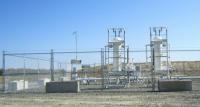
One of the primary concerns of those who oppose the development of shale gas by hydraulic fracturing is that creation of new fractures in the earth could cause fracking fluids to leak into, and contaminate, underground freshwater aquifers. Potential future fracking activity in the United Kingdom is unlikely to pose a pollution danger to overlying aquifers, new research from a leading academic suggests.
-
-
Putting consistent value on experts' uncertainty on climate change models
Science can flourish when experts disagree, but in the governmental realm uncertainty can lead to inadequate policy and preparedness. When it comes to climate change, it can be OK for computational models to differ on what future sea levels will be. The same flexibility does not exist for determining the height of a seawall needed to protect people from devastating floods. For the first time in the climate field, researchers have combined two techniques long used in fields where uncertainty is coupled with a crucial need for accurate risk-assessment — such as nuclear energy — in order to bridge the gap between projections of Earth’s future climate and the need to prepare for it.
-
-
Rising seas put Vietnam in the “bull’s eye” of rising seas
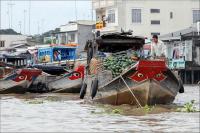
A rising sea level — for a country like Vietnam, with 2,000 miles of coastline — presents a major environmental and food security challenge, especially in the Mekong River Delta region where 22 percent of the population lives and about half of the country’s food is produced.
-
-
Groundwater quality changes alongside the expansion of hydraulic fracturing and horizontal drilling
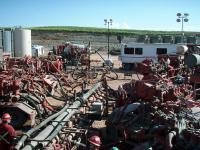
New research demonstrates that groundwater quality changes alongside the expansion of horizontal drilling and hydraulic fracturing but also suggests that some potentially hazardous effects may dissipate over time. The research is the first to analyze groundwater quality in the Cline Shale region of West Texas before, during, and after the expansion of hydraulic fracturing and horizontal drilling.
-
-
1.5°C vs 2°C global warming: Half a degree makes a big difference
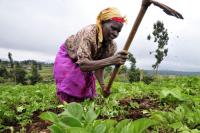
European researchers have found substantially different climate change impacts for a global warming of 1.5°C and 2°C by 2100, the two temperature limits included in the Paris climate agreement. The additional 0.5°C would mean a 10-cm-higher global sea-level rise by 2100, longer heat waves, and would result in virtually all tropical coral reefs being at risk.
-
-
New way to clean contaminated groundwater
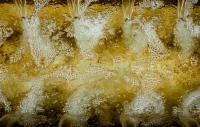
A team of researchers has helped discover a new chemical method to immobilize uranium in contaminated groundwater, which could lead to more precise and successful water remediation efforts at former nuclear sites. Uranium is present in contaminated groundwater at various sites in the United States as a legacy of Cold War-era processing and waste disposal activities associated with nuclear materials production.
-
-
Oil, gas wastewater disposal pollutes surface water, harm waterways
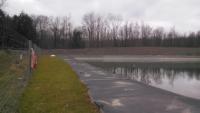
Unconventional oil and gas (UOG) operations combine directional drilling and hydraulic fracturing, or “fracking,” to release natural gas and oil from underground rock. This process results in in water pollution which may increase endocrine disrupting chemicals (EDCs) in surface and ground water, exposing populations living near these operations to increased risk of disease. High levels of EDC activity were found in the surface water near a hydraulic fracturing wastewater disposal facility in West Virginia. Approximately 36,000 of these disposal wells are currently in operation across the United States.
-
- All
- Regional
- Water
- Biometrics
- Borders/Immig
- Business
- Cybersecurity
- Detection
- Disasters
- Government
- Infrastructure
- International
- Public health
- Public Safety
- Communication interoperabillity
- Emergency services
- Emergency medical services
- Fire
- First response
- IEDs
- Law Enforcement
- Law Enforcement Technology
- Military technology
- Nonlethal weapons
- Nuclear weapons
- Personal protection equipment
- Police
- Notification /alert systems
- Situational awareness
- Weapons systems
- Sci-Tech
- Sector Reports
- Surveillance
- Transportation
Advertising & Marketing: advertise@newswirepubs.com
Editorial: editor@newswirepubs.com
General: info@newswirepubs.com
2010-2011 © News Wire Publications, LLC News Wire Publications, LLC
220 Old Country Road | Suite 200 | Mineola | New York | 11501
Permissions and Policies
Editorial: editor@newswirepubs.com
General: info@newswirepubs.com
2010-2011 © News Wire Publications, LLC News Wire Publications, LLC
220 Old Country Road | Suite 200 | Mineola | New York | 11501
Permissions and Policies
